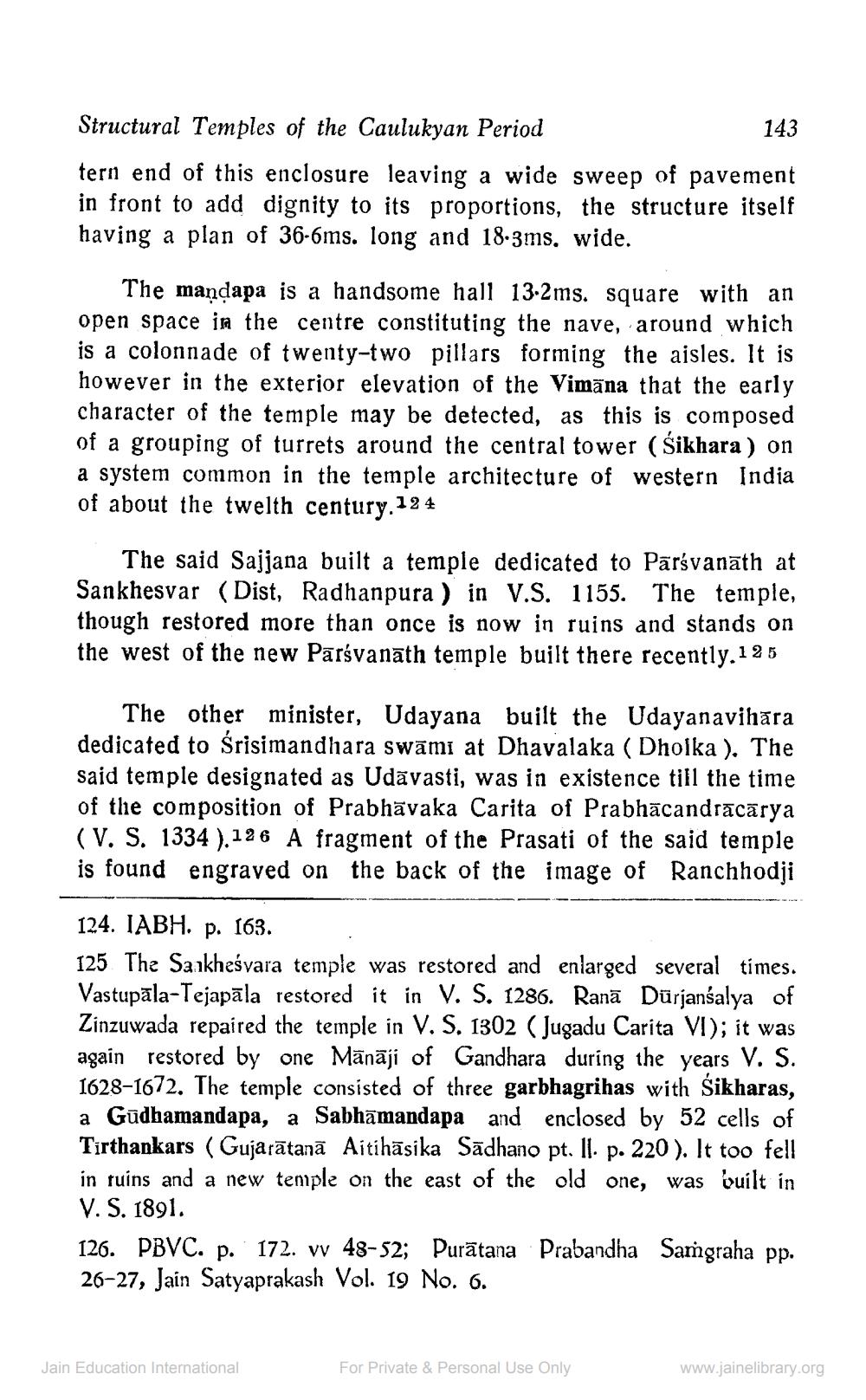________________
Structural Temples of the Caulukyan Period
143 tern end of this enclosure leaving a wide sweep of pavement in front to add dignity to its proportions, the structure itself having a plan of 36-6ms. long and 18.3ms, wide.
The mandapa is a handsome hall 13.2ms. square with an open space in the centre constituting the nave, around which is a colonnade of twenty-two pillars forming the aisles. It is however in the exterior elevation of the Vimāna that the early character of the temple may be detected, as this is composed of a grouping of turrets around the central tower (Śikhara) on a system common in the temple architecture of western India of about the twelth century. 124
The said Sajjana built a temple dedicated to Pārsvanāth at Sankhesvar (Dist, Radhanpura ) in V.S. 1155. The temple, though restored more than once is now in ruins and stands on the west of the new Pārsvanath temple built there recently. 125
The other minister, Udayana built the Udayanavihara dedicated to Śrisimandhara swami at Dhavalaka ( Dholka). The said temple designated as Udāvasti, was in existence till the time of the composition of Prabhāvaka Carita of Prabhācandrācārya (V. S. 1334 ).126 A fragment of the Prasati of the said temple is found engraved on the back of the image of Ranchhodji
124. IABH. p. 163. 125 The Sankheśvara temple was restored and enlarged several times. Vastupāla-Tejapāla restored it in V. S. 1286. Ranā Dūrjanšalya of Zinzuwada repaired the temple in V. S. 1302 ( Jugadu Carita VI); it was again restored by one Mānāji of Gandhara during the years V. S. 1628–1672. The temple consisted of three garbhagrihas with śikharas, a Gūdhamandapa, a Sabhāmandapa and enclosed by 52 cells of Tirthankars (Gujarātanā Aitihāsika Sādhano pt. II. p. 220 ). It too fell in ruins and a new temple on the east of the old one, was built in V. S. 1891. 126. PBVC. p. 172. w 48-52; Purātana Prabandha Samgraha pp. 26–27, Jain Satyaprakash Vol. 19 No. 6.
Jain Education International
For Private & Personal Use Only
www.jainelibrary.org




